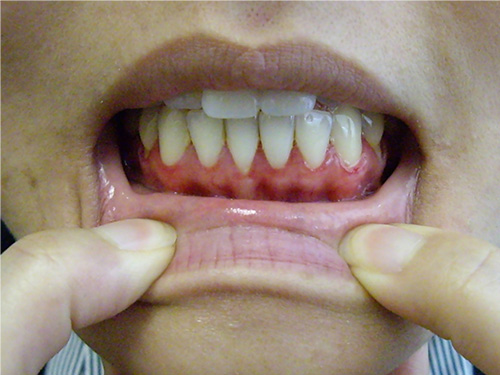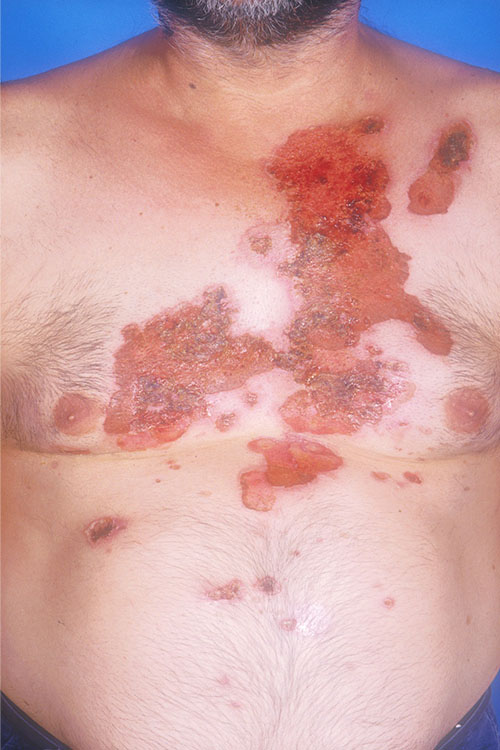Pemphigus
Pemphigus is a rare autoimmune blistering skin condition with two predominant forms: pemphigus foliaceus and pemphigus vulgaris. In both forms, autoantibodies deposit in the epidermis, resulting in an inflammatory reaction that causes loss of cell attachment (acantholysis) and subsequent blister formation. Blisters are fragile, easily eroded and painful because of the level of the epidermis at which the blisters form.
Pemphigus foliaceus presents as crusted scaling rather than bullae because it causes acantholysis at a more superficial level of the epidermis than pemphigus vulgaris. Mucous membrane lesions do not occur in pemphigus foliaceus. See here for photos of pemphigus foliaceus.



Initial treatment for pemphigus foliaceus is a potent topical corticosteroid. Use:
betamethasone dipropionate 0.05% cream or ointment topically, once daily until skin is clear. betamethasone dipropionate betamethasone dipropionate betamethasone dipropionate
If a topical corticosteroid is not effective, seek dermatologist advice. Systemic therapy with an oral corticosteroid and a steroid-sparing immunosuppressant (eg mycophenolate, azathioprine, ciclosporin) may be required. Dapsone, rituximab and cyclophosphamide are sometimes used by dermatologists.
Pemphigus vulgaris causes significant morbidity and mortality. It usually presents with painful erosions of the oral mucosa, and most patients also develop widespread flaccid blisters and cutaneous erosions. Intact blisters are rare. See here for photos of pemphigus vulgaris.


Refer to a dermatologist or oral medicine specialist for treatment of pemphigus vulgaris because management is complex and protracted. Treatment involves oral immunosuppressive therapy (eg corticosteroids, mycophenolate, azathioprine, ciclosporin), alone or in combination with topical immunosuppressants. Monoclonal treatments (eg rituximab) and cyclophosphamide are other treatments used by specialists. For general considerations in biological therapy, including vaccinations, see Principles of immunomodulatory drug use in the Rheumatology guidelines.
